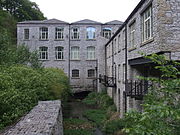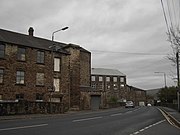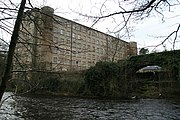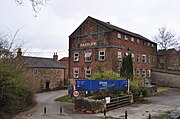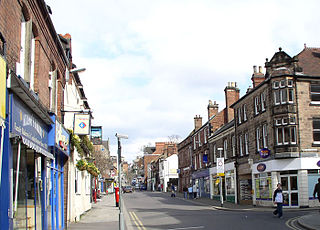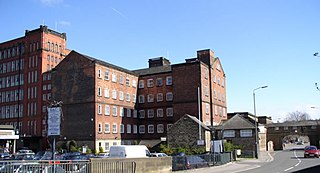Derwent Valley
- This includes Derby, and Belper
| Name | Architect | Location | Built | Demolished | Served (Years) |
|---|---|---|---|---|---|
| North Mill | Belper 53°01′45″N1°29′11″W / 53.0291°N 1.4864°W | 1786/1804 | |||
 | 1186846 Notes: The original North Mill, completed in 1786 by Jedediah Strutt, was destroyed by fire in 1803. Its replacement was built in 1804 by his son, William Strutt, on the foundations of the old mill and is one of the oldest surviving examples of an iron-framed 'fire-proof' building in the world. [1] | ||||
| East Mill | Belper 53°01′44″N1°29′09″W / 53.0288°N 1.4857°W | 1912 | Standing | 111 | |
 | 1336982 Notes: A fortress-like, seven-storey building, 24 bays by 11, with four corner turrets with Italianate tower, it was constructed by the English Sewing Cotton Company in 1912. [1] | ||||
| Round Mill | Belper 53°01′41″N1°29′11″W / 53.0280°N 1.4865°W | 1816 | 207 | ||
| Notes: Demolished; designed for bale-breaking. | |||||
| West Mill | Belper 53°01′42″N1°29′12″W / 53.0284°N 1.4866°W | 1797 | 226 | ||
| Notes: Demolished. | |||||
| 2nd South Mill | Belper 53°01′42″N1°29′12″W / 53.0284°N 1.4866°W | 1811 | 212 | ||
| Notes: Demolished. | |||||
| Junction Mill | Belper 53°01′42″N1°29′12″W / 53.0284°N 1.4866°W | ||||
| Notes: Demolished. | |||||
| Reeling Mill | Belper 53°01′42″N1°29′12″W / 53.0284°N 1.4866°W | 1807 | 216 | ||
| Notes: Demolished. | |||||
| de Bradelei Mill | Belper 53°01′18″N1°29′06″W / 53.0216°N 1.4849°W | ||||
| Notes: George Brettle & Co., makers of hosiery. [2] | |||||
| Unity Mill | Derwent St, Belper 53°01′25″N1°29′10″W / 53.0236°N 1.4861°W | mid 19th century | |||
| 1087354 Notes: A corn mill converted to cotton spinning by John Strutt (1853), then furniture manufacture. [2] | |||||
| 1850 Gritstone warehouse | Belper | ||||
| Notes: The Ward, Sturt and Sharp hosiery warehouse from 1850. [2] | |||||
| Boar's Head Cotton Mills | Darley Abbey 52°56′38″N1°28′28″W / 52.9438°N 1.4745°W | 1782-1862 | |||
 | Notes: The Evans Mills produced high-quality 'Boar's Head' sewing cotton. Long Mill was built in 1782, operational in 1788, then burnt down in 1789 and was rebuilt in 1790. The top floor was used as a schoolroom for their child workers. It connects to West Mill (1821), Middle Mill (1804–05) and East Mill (1811). Separate is a Gassing Shed (1862) where the thread was singed, and the North Mill (1835). The free-standing engine house has been demolished but the chimney remains. [3] | ||||
| Cromford Mill | Cromford 53°06′31″N1°33′21″W / 53.1085°N 1.5557°W | 1771 | |||
 | 1248010 Notes: The first cotton mill set up by Richard Arkwright to use the "Spinning Jenny" to make cotton thread. Later a paint factory. | ||||
| Bath Street Mill | Derby | 1851 | 172 | ||
 | Notes: | ||||
| Queen Street Mill | Derby | ||||
| Lombe's Mill | Derby | 18th century | |||
 | Notes: | ||||
| Masson Mill | Matlock Bath 53°06′44″N1°33′44″W / 53.1121°N 1.5621°W | 1783 | 240 | ||
 | Notes: | ||||
| Milford Mills | Milford 53°00′18″N1°28′53″W / 53.0049°N 1.4813°W | ||||
 | Notes: The Milford mill complex, built by Jebediah and William Strutt, spanned the A6 toll road, upstream from Milford bridge. Started in the 1780s to spin cotton, it expanded to include bleaching and dyeing mills. William built the warehouse in 1793, experimenting to produce a multi-storey fire-proof mill.The extant dyehouse near the bridge was a later more successful attempt. [4] | ||||

